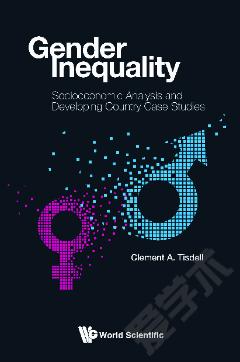Gender Inequality: Socioeconomic Analysis And Developing Country Case Studies
This unique book provides an easily comprehended overview of facts about gender inequality and contains a valuable introduction to economic theories of this inequality, the applicability of which is assessed in the light of empirical evidence. A special feature of this book is its adoption of a multidisciplinary approach to the study of gender inequality. Both economic and sociological influences on gender inequality are taken into account in an innovative fashion.The scholarly coverage of this book is broad and focuses mainly on female disadvantage; both that suffered by female children and by women. Subjects covered include economic theories of gender inequality and critiques of these; sex selection, preferences for boys and the value of females; measures of gender inequality and their application; the occurrence of poverty and its relationship with the deprivation of women and children; implications for the status of females of their access to different forms of capital (taking into account modern concepts of capital); the need to take into account little explored relationships between gender inequality and the achievement of sustainable development; ecofeminism; and the abuse of women by men. The discussion is reinforced by case studies and examples drawn primarily from South Asian and Northeast Asian countries. Some attention is given in the case studies to the diverse practices of 'tribal' people and minorities. This is done in order to better assess existing theories about gender inequality. The value of adopting a multidisciplinary approach to the study of gender inequality is well demonstrated. Consequently, this book provides a more holistic and balanced view of gender inequality than other available books.
{{comment.content}}








 京公网安备 11010802027623号
京公网安备 11010802027623号